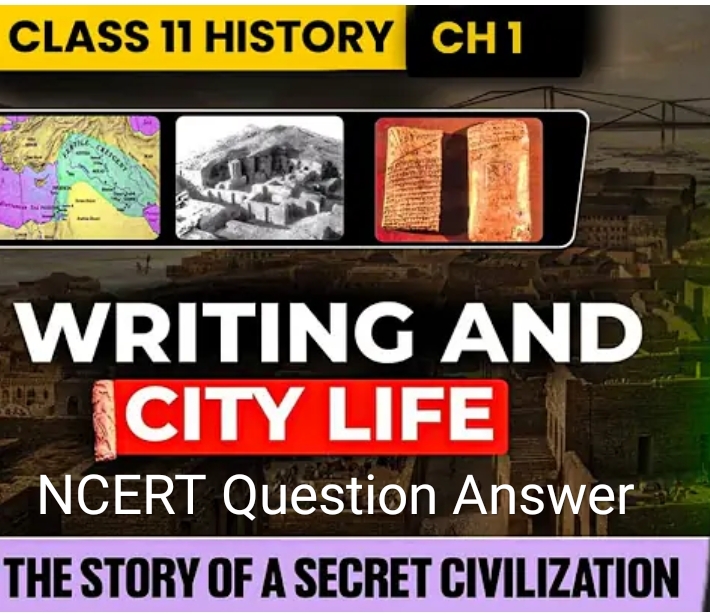Q1. What is the meaning of ‘Mesopotamia’?
Ans: It means “the land between two rivers” – Tigris and Euphrates.
Q2. Who was Gilgamesh?
Ans: Gilgamesh was a legendary king of Uruk and the hero of the Epic of Gilgamesh.
Q3. What material was used for writing in Mesopotamia?
Ans: Clay tablets using a stylus.
Q4. Which writing system was used in Mesopotamia?
Ans: Cuneiform script.
Q5. Why do we say that it was not natural fertility and high levels of food production that were the of early urbanization?
Answer: Although Mesopotamia had fertile land and high agricultural productivity due to irrigation, urbanization happened because of:
The rise of temples and religious institutions.
Emergence of traders, craftsmen, and administrators.
Need for centralized control of resources and labor.
Development of writing for record-keeping. Hence, social, economic, and administrative factors led to early urbanization, not just natural fertility.
Q6. Which of the following were necessary conditions and which the causes, of early urbanization, and which would you say were the outcome of the growth of cities:
(a) Highly productive agriculture
(b) Water transport
(c) The lack of metals and stones in Mesopotamia
(d) The division of labor
(e) The use of seals
(f) The military power of kings that made labor compulsory
Answer:
Point Category
(a) Highly productive Necessary condition
agriculture
(b) Water transport Necessary condition
(c) Lack of metals and stones Cause
(d) Division of labor Cause
(e) Use of seals Outcome
(f) Military power of kings Cause
Q7. Why were mobile animal herders not necessarily a threat to town life?
Answer: Mobile herders were not a threat because:
They supplied animals, dairy products, and meat to cities.
Provided wool and leather.
Exchanged goods peacefully with urban people.
Sometimes worked as seasonal labor in fields or towns.
Their movement and trade benefited urban societies.
Q8. Why would the early temple have been much like a house?
Answer:
Early temples resembled houses because:
They were initially simple structures for storing agricultural produce.
Priests lived in them.
Over time, they evolved into larger religious and administrative centers.
So, the temple started as a residence and gradually became monumental.
Q9. Describe the functions of the temple in Mesopotamian society.
Answer: Functions of Mesopotamian temples:
Religious center: Place of worship for gods.
Economic center: Controlled surplus grain and goods.
Administrative hub: Recorded transactions and managed workers.
Employed people: Priests, artisans, farmers worked for temples.
Temples were central to Mesopotamian life.
Q10. What do ancient stories tell us about the civilization of Mesopotamia?
Answer: Ancient stories like the Epic of Gilgamesh reveal:
Concerns about death, immortality, and moral values.
Role of kings and gods in society.
Urban planning, floods, and life in early cities.
Importance of friendship and duties of rulers.
Such stories provide insight into the beliefs, values, and experiences of Mesopotamian people.
Q1.1 What were the main features of Mesopotamian cities?
Ans: Planned layout with temples and public buildings.
Streets, markets, and houses were organized.
Cities were administrative and religious centers.
Q12. Describe the social structure of Mesopotamian society.
Ans: Stratified society: Priests and kings at the top.
Merchants, artisans, farmers in middle.
Slaves and laborers at the bottom.
Q13. Discuss the development and significance of writing in Mesopotamia.
Ans: Writing started to maintain records of trade and grain.
Evolved into cuneiform script, written on clay tablets.
Used for administration, law codes (e.g., Hammurabi’s code), and literature.
Helped in the formation of complex institutions







